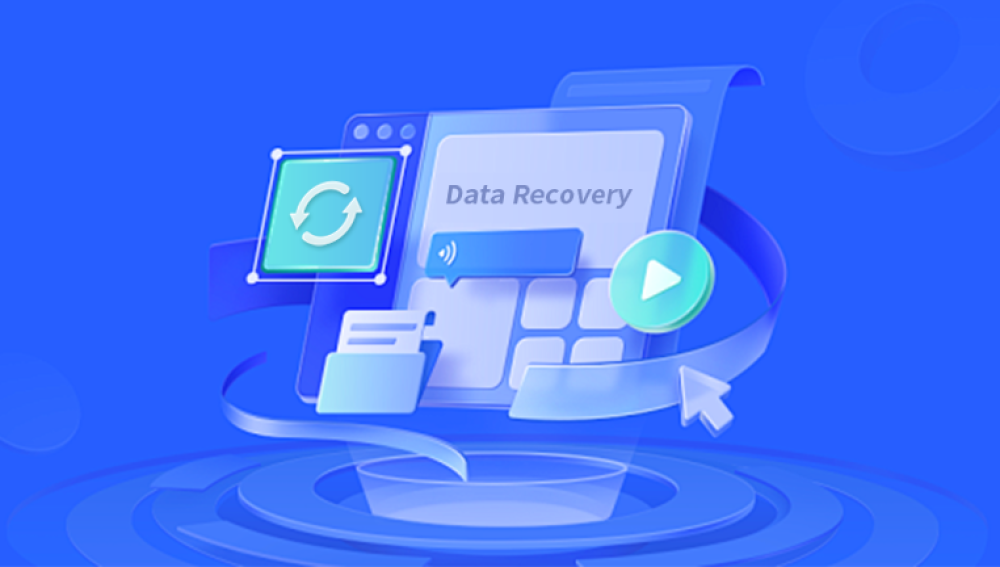Recovering old deleted photos might sound like a lost cause, but with the right approach, tools, and a bit of persistence, it’s often possible to bring those memories back to life. This comprehensive guide walks you through every practical step and method to recover old deleted photos across devices and storage systems.
This means the sooner you act after realizing your photos are missing, the better your chances of recovering them. However, even if it's been months or years, recovery might still be possible especially if the storage area has remained relatively untouched.
Step 1: Check All the Obvious Places
Sometimes, old photos are not permanently deleted but merely hidden or misplaced. Start by exploring these locations:

Recently Deleted Folders
Many devices and applications have a “Recently Deleted” folder that holds deleted files for a period (e.g., 30–60 days).
iPhone/iPad: Open Photos > Albums > Recently Deleted.
Android: Check Google Photos > Library > Trash.
Windows: Open the Recycle Bin.
Mac: Check the Trash folder.
If your photos were deleted within the past month or two, this is the easiest place to find and recover them.
Cloud Services
If you’ve enabled automatic cloud backups, your photos may still be safely stored in the cloud even after being deleted from your device.
Check:
Google Photos
iCloud Photos
OneDrive
Dropbox
Amazon Photos
Each of these services has its own retention and backup policies, but many keep deleted photos in the trash or recycle bin for a limited period before permanently removing them.
External Backups
Think about any external hard drives, SD cards, USB flash drives, or CDs/DVDs you might have used to back up your data. Sometimes people forget they manually saved a batch of photos in the past.
Also consider email attachments, social media uploads, and chat backups. You might have shared or stored the images elsewhere without realizing it.
Step 2: Use Built-In Recovery Options
Most modern operating systems come with built-in recovery tools that can help restore old files from backups or system images.
Windows File History
If you’ve activated File History, Windows may have stored backup versions of your photos.
Go to the folder where your photos were originally stored.
Right-click and select “Restore previous versions.”
Browse through available backups and restore the one you need.
macOS Time Machine
Mac users can recover old photos via Time Machine, assuming backups were enabled.
Connect your Time Machine drive.
Open the folder where the photos were located.
Launch Time Machine from the menu bar.
Browse through historical snapshots and restore the desired files.
Step 3: Use Professional Data Recovery Software
Drecov Data Recovery
Losing old photos can feel like losing a part of your past but with Drecov Data Recovery, there's still hope. Whether your cherished pictures vanished due to accidental deletion, formatting errors, or a corrupted drive, Drecov Data Recovery is designed to bring those lost memories back to life with ease and precision.
Drecov Data Recovery supports a wide range of storage devices, including hard drives, SD cards, USB flash drives, smartphones, and even formatted or damaged storage media. Its advanced scanning algorithms dig deep into your device to locate and restore photos that traditional file browsers can’t detect. Even if the deletion happened long ago, as long as the data hasn’t been overwritten, recovery is often still possible.
Using the tool is simple: just launch Drecov Data Recovery, select the drive where your photos were originally stored, and let the software scan for recoverable files. Once complete, it provides a preview of found images, allowing you to selectively recover what matters most. Whether you're retrieving family vacation photos or snapshots from a special event, the process is fast, intuitive, and secure.
Step 4: Recover Photos from Mobile Devices
Android Devices
If your Android phone doesn’t have photos in the Trash or Google Photos, you can use recovery software:
Connect the phone to a PC and enable file transfer.
Use tools like Dr.Fone, Tenorshare UltData, or iMobie PhoneRescue.
Some tools may require root access for a deep scan.
iPhones and iPads
Deleted photos on iOS can sometimes be recovered using:
iTunes/iCloud backups (via factory reset or third-party tools).
Software like iMobie PhoneRescue, Enigma Recovery, or Dr.Fone.
To avoid overwriting data, it’s best to turn off Wi-Fi and avoid any new activity on your device until recovery is complete.
Step 5: Professional Data Recovery Services
If DIY software fails, a professional data recovery service might be your last resort. These services are especially useful if:
The storage device is physically damaged.
The data is extremely valuable.
You've tried software tools with no luck.
These companies use advanced tools and cleanroom environments to repair drives and extract lost data. Some operate on a “no recovery, no fee” basis.
Examples include:
DriveSavers
Ontrack
Secure Data Recovery
You’ll need to ship your device to them, and the cost can range from a few hundred to several thousand dollars, depending on the damage and complexity.
Special Cases and Recovery Tips
Recovering Photos from SD Cards and Cameras
Photos deleted from SD cards (common in digital cameras) are often recoverable if the card hasn’t been overwritten. Use a card reader and tools like PhotoRec, Recuva, or Stellar.
Format recovery is also possible—if you formatted an SD card by mistake, immediately stop using it and scan it with photo recovery software.
Recovering Photos from Corrupted or Unreadable Drives
A corrupted drive might still contain recoverable files. Use software that can rebuild or clone damaged partitions. PhotoRec and R-Studio are great for handling severe corruption cases.
You may need to mount the drive as read-only (especially on Linux or using Windows Disk Management) to avoid further damage.
Recovering Photos After Factory Reset
If a device has been factory reset, recovery becomes harder but not impossible. Specialized software like Tenorshare or Dr.Fone might still retrieve photos—especially if the reset happened recently and the storage hasn’t been extensively used since.
How to Increase Your Chances of Successful Recovery
Act fast: The sooner you start the recovery process, the better.
Minimize activity: Avoid using the device until recovery is complete.
Use read-only tools: When possible, scan the affected storage without writing to it.
Clone drives: Create a sector-by-sector clone and recover from the copy, preserving the original drive.
Preventing Photo Loss in the Future
While photo recovery is possible, it’s always better to prevent loss in the first place. Adopt these habits:
Enable Automatic Cloud Backups
Use Google Photos, iCloud, Dropbox, or OneDrive to automatically back up new photos from your devices. Enable settings that upload over Wi-Fi to avoid data overuse.
Regularly Back Up to External Drives
At least once a month, transfer your photo library to an external hard drive or SSD. Consider keeping multiple backups and storing one in a different location.
Use Photo Management Software
Programs like Adobe Lightroom or Apple Photos offer backup, organization, and sync features that protect your images.
Avoid Overwriting Drives
If you suspect photo loss, avoid using or saving anything to the affected drive or device until you’ve completed your recovery attempts.
Emotional Value and the Patience Factor
Recovering old deleted photos isn’t always a one-click solution. It may involve hours of scanning, previewing, testing different tools, or even seeking professional help. But the reward—the return of a cherished memory, a glimpse into a lost moment—makes the effort worthwhile.
It’s okay to feel frustrated if recovery doesn’t go smoothly. Take breaks, try multiple methods, and don't give up too soon. Sometimes, it’s the third or fourth tool that works best for a particular device or file system.
Digital photo recovery is more accessible than ever, thanks to intuitive software and cloud integration. Whether you’ve lost wedding photos, baby pictures, travel shots, or treasured snapshots of someone no longer with you, there’s hope.
Start by checking obvious locations like recycle bins and cloud backups. Move on to built-in system tools and then explore specialized recovery software. If needed, reach out to professional services. And finally, establish a backup routine to make sure your digital memories stay safe for years to come.
Memories don’t have to be lost forever. With a bit of knowledge and patience, those seemingly deleted photos might just be waiting to be rediscovered.




